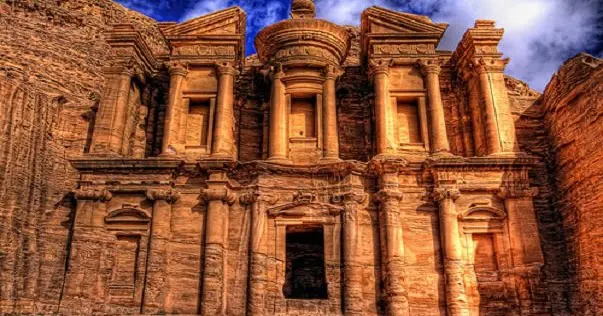
Petra – The Rose City in the Rocks: How to See Jordan’s Wonder Without Tourist Crowds
Petra, often referred to as the “Rose City,” is one of Jordan’s most iconic archaeological sites. Famous for its rock-carved architecture and historical significance, it attracts thousands of visitors every year. However, experiencing Petra without the overwhelming crowds requires careful planning and knowledge of hidden routes.
Best Times to Visit Petra to Avoid Crowds
Timing is everything when it comes to visiting Petra. Since the site is a major tourist attraction, planning your trip around peak hours can significantly impact your experience.
Early mornings and late afternoons are the best times to explore Petra with minimal crowds. The main influx of visitors typically arrives between 9:00 AM and 3:00 PM, as most guided tours operate within this timeframe.
Additionally, visiting Petra during the shoulder seasons – spring (March to May) and autumn (September to November) – ensures pleasant weather and fewer tourists compared to the busy summer months.
Exploring Petra at Night
One of the most magical ways to experience Petra is by attending the “Petra by Night” event. This unique spectacle, held on select evenings, illuminates the Siq and the Treasury with hundreds of candles, creating a mesmerising atmosphere.
Since “Petra by Night” is less frequented than daytime visits, it offers a quieter, more intimate encounter with the ancient city. However, it’s advisable to check the event schedule in advance to plan accordingly.
Booking tickets for the event ahead of time ensures a seamless experience. As the event is limited to a certain number of attendees, securing a spot early can enhance your visit.
Alternative Routes to the Treasury
Most tourists enter Petra through the Siq, the famous narrow gorge leading to the Treasury. While breathtaking, this route is often crowded. Fortunately, there are alternative trails that offer a more peaceful experience.
The Al-Madras Trail is an excellent option for those seeking a quieter entrance to Petra. This lesser-known path provides stunning panoramic views and avoids the heavy foot traffic of the Siq.
Another hidden gem is the “Backdoor Route” via Little Petra. This path not only bypasses the main entrance but also introduces visitors to the fascinating rock formations and lesser-known archaeological sites before reaching the Monastery.
Exploring Beyond the Treasury
While the Treasury is Petra’s most famous landmark, the ancient city offers much more to discover beyond this iconic structure. The Monastery (Ad Deir) is a must-visit, with its grand façade and breathtaking mountain views.
Another hidden treasure is the High Place of Sacrifice. This elevated site provides panoramic views of Petra and is significantly less crowded than the main trails.
The Royal Tombs, carved into the cliffs, offer insight into the grandeur of Nabataean architecture. Since fewer visitors explore this section, it provides a more immersive historical experience.

Essential Tips for a Crowd-Free Experience
To make the most of your visit, consider starting your journey as early as possible. Arriving at the entrance by 6:00 AM allows you to explore key sites before the peak hours begin.
Hiring a licensed local guide can enhance your experience by providing insights into Petra’s history while leading you through less-traveled paths.
Bringing enough water and wearing comfortable walking shoes are essential, as Petra’s terrain is rugged and requires significant walking to fully explore.
Responsible Tourism in Petra
Petra is a UNESCO World Heritage Site, and preserving its natural and historical integrity is crucial. Visitors are encouraged to respect the site by avoiding climbing on fragile structures and refraining from littering.
Supporting local Bedouin communities by purchasing authentic crafts and souvenirs directly from artisans contributes to the sustainable tourism economy of the region.
Lastly, being mindful of animal welfare is important. Many locals offer donkey and camel rides, but ensuring ethical treatment of these animals before opting for a ride helps promote responsible tourism practices.
